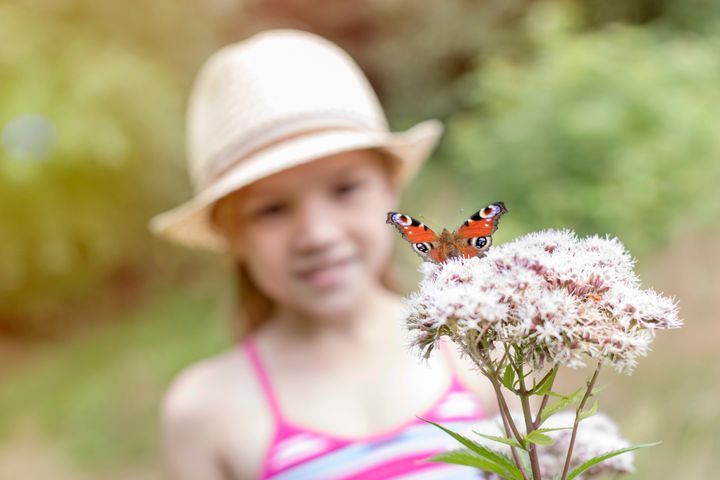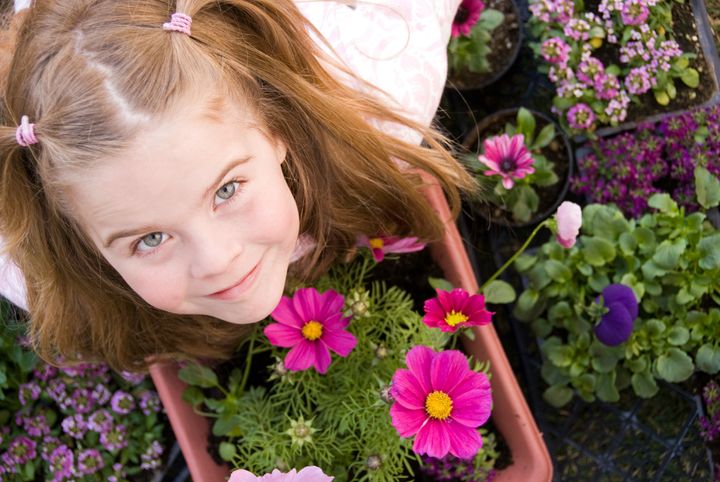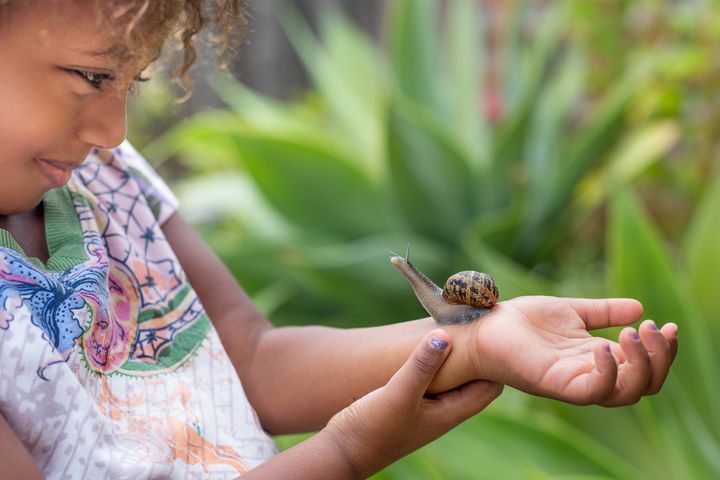You don’t need acres of wildflower meadows to attract wildlife. A small backyard, miniature garden or even balcony can become a magnet for birds and bugs and provide year-round interest for you and your kids.

1. Do set up a bird feeder and small bird bath
Garden birds are easy to attract and endlessly fascinating for the family to watch. Make sure your bird feeder is placed high enough away from curious cats and you can make life trickier for raiding squirrels by choosing thicker metal feeders rather than the wire mesh ones that they can easily prise open. Don’t forget to leave a saucer of clean water for your feathered visitors.
You can make your own fat balls - kids will love stirring and shaping the mixture. Melt one part suet or lard in a saucepan to two parts dry ingredients (wild bird seed, currants, sultanas, oats, bread and cake crumbs, grated cheese and peanuts). Roll into balls, place on a tray in the fridge overnight, then pop in a feeder. Alternatively, thread a piece of string through a hole in the bottom of a mini yogurt container, pack the mixture into the pots, put in the fridge overnight, then cut the container sides off to have hanging feed balls.
Keep the area under feeders clean and regularly brush out feeders with washing liquid and water.
2. Don’t aim for ‘perfection’
Children and a manicured, super tidy garden are never going to go hand-in-hand - which is excellent news for attracting wildlife. Your garden doesn’t have to look a mess, but a few less-coiffed corners can provide food and habitat for many species.
Leave a pile of leaves, twigs and larger logs and stones tucked away in a corner to provide cover and hibernation sites for stag and bark beetles, slug-eating centipedes and amphibians like frogs.
Allow a patch of grass to grow longer to provide shelter and food for butterfly caterpillars. You could even scatter a packet of wildflower seed in this little patch.
Leave perennials and grasses uncut over winter so their hollow stems can shelter hibernating insects - and provide beautiful frost-covered shapes festooned with spider webs.

3. Do grow pollen and nectar-rich flowers
Flowers provide pollen and nectar for bees, butterflies and other insects. As well as the fascination of watching bees and butterflies feasting, these insects are essential for fertilisation - without their vital function, seed and fruit production would drop dramatically.
You don’t have to spend a fortune - grow a mixture of easy annuals from seed like poppies, cosmos, sunflowers and cornflowers, biennials (plants that put on growth from seed in the first year and flower the second year) like foxgloves and perennials like lavenders and salvias, the garden stalwarts that flower year after year. The key is to provide options year round, from crocuses in February to ivy that provides food in winter.
The Royal Horticulural Study has a perfect for pollinators plant list.
4. Do make a pond in a pot
The single easiest way to add an incentive for wildlife to hang out in your space is to install a pond. You don’t need one the super-size of Monty Don’s; a galvanised trough or ceramic pot with a pond liner blocking the drainage hole works well.
Position it in part shade and add bricks under the water to allow easy entrance and exit for frogs and newts, an oxygenating plant to keep the water fresh and some pond marginals to make your pot beautiful to look at and even more attractive to wildlife. For maximum wildlife, it’s best to avoid adding fish as they’ll eat anything that moves.
Never leave young children unattended near water, no matter how shallow.

5. Don’t use chemicals
Spraying toxic pesticides and scattering chemical deterrents is the worst thing you can do if you want a bio-diverse outside space. By interrupting the natural cycle you might rid your garden of a ‘pest’ in the short term but you’ll also kill off other natural pest predators too. Ladybirds, parasitic wasps, spiders, frogs and birds will all prey on pests, while hand-picking slugs and snails is a fun task for kids.
Composting your garden waste, leftover cardboard and fruit and veg scraps is also an easy way improve your soil for free. Many councils offer free or heftily reduced in price compost bins and wormeries.
6. Do make a bee hotel
As well as steering clear of pesticides and planting flowers attractive to bees, providing potential nesting and overwintering sites for bees will reap benefits for your garden.
Encourage your kids to keep an eye out for hollow stemmed plants in your garden and on local walks, for example, dried cow parsley stems and bamboo canes. Gather the different sized hollow tubes together and tie securely with string. Place in sunny positions and wait to see if any solitary bees (there are 260 different varieties in the UK alone) and bumblebees make their homes. You can also drill 2-8mm wide holes in fence posts and log piles too. These bees are the good guys of the natural world and rarely sting people.
Here’s hoping you enjoy a summer with your outdoor space buzzing with wildlife activity.